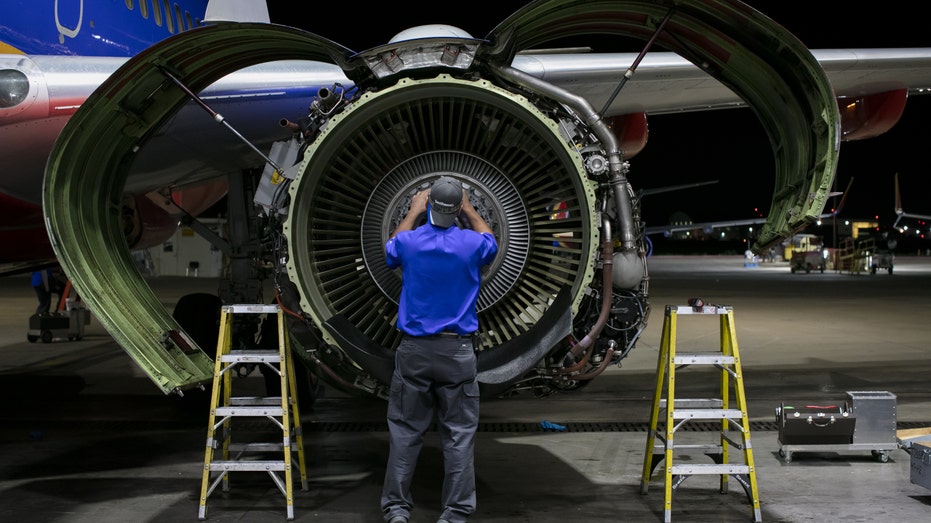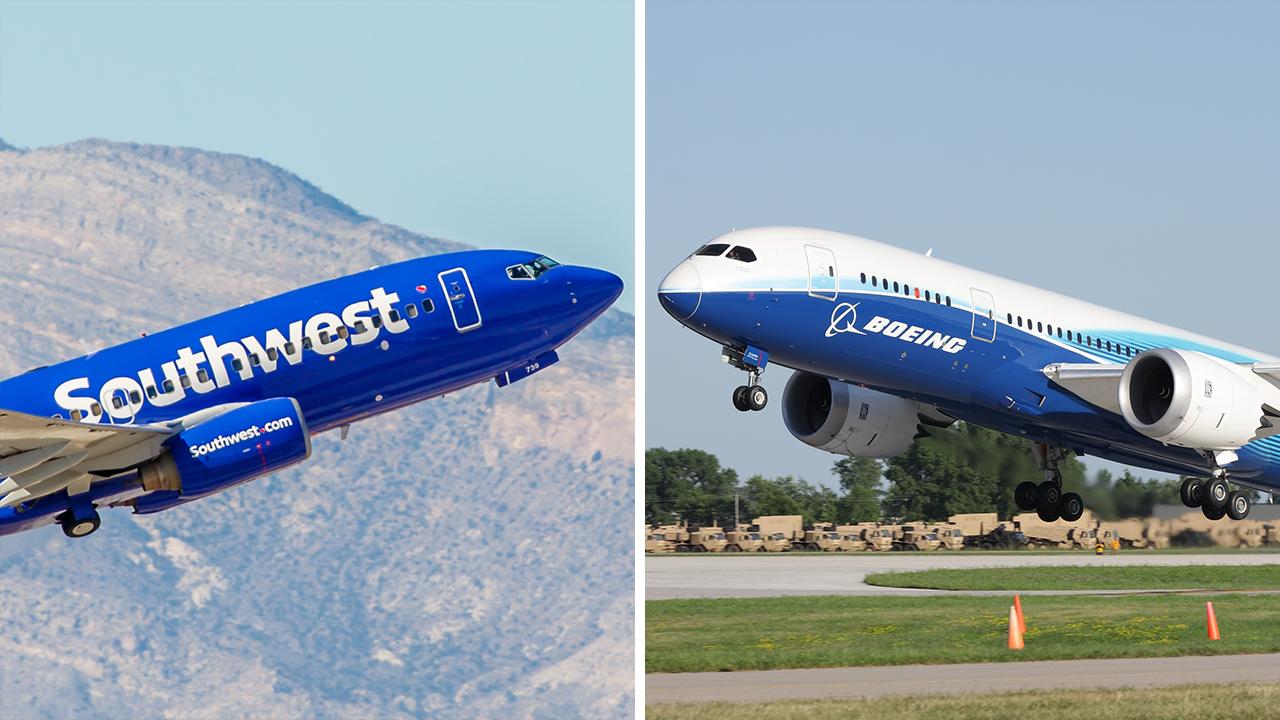US seeks changes to older Boeing 737s after deadly Southwest engine failure
Passenger pulled partially through window shredded by debris
The U.S. government should require Boeing to redesign the casings that cover jet turbines on older 737 airliners to ensure they stay intact even in engine failures like the one in April 2018 that shattered a plane's window mid-flight and left a passenger dead, the National Transportation Safety Board said Tuesday.
The passenger, 43-year-old Jennifer Riordan, a Wells Fargo executive, died from injuries suffered when she was pulled partially through the broken window, investigators said afterward.
BOEING 737 MAX SALES PICK UP AT DUBAI AIRSHOW
A fan blade on one of the Southwest Airlines jets' engines had broken, the investigators found, starting a cascade of events that led to the engine blowing apart more than 30,000 feet over Pennsylvania. The broken window caused an immediate decompression of the cabin — oxygen masks dropped, debris swirled through the compartment, and the air temperature plunged. While Riordan was the first passenger killed on a U.S. airline flight in more than nine years, eight others suffered minor injuries.

Southwest Technical Operations Team performs detailed ultrasonic inspections of engine blades. (Southwest Airlines)
The pilot, who struggled to control the plane, was able to make an emergency landing in Philadelphia with the remaining engine. To keep travelers safe in a similar scenario, the safety board said during a Tuesday hearing, the Federal Aviation Administration should require Boeing to redesign and replace the casings, or cowls, on new 737 Next Generation models. The aircraft, a single-aisle jet heavily used by airlines, was a precursor to the grounded 737 MAX.
Once regulators approve the modification, the NTSB said, U.S. carriers should be required to retrofit their fleets with it.
"It is not enough to do our best to prevent a failure; we also must actively work to identify ways to minimize the effects of a failure if one occurs," NTSB Chairman Robert Sumwalt said. "These recommendations show the way toward greater safety even when a 'fan blade out' event occurs."
Boeing, already under pressure over the grounding of its best-selling 737 MAX after two overseas crashes that killed 346 people, said it will work closely with the FAA and engine-manufacturers on improvements that comply with the NTSB's recommendations.
Modifications to cowl designs are underway that will "enhance their ability to withstand an engine 'fan blade out' event," the Chicago-based planemaker said. "Our common goal is to help prevent similar events from happening in the future."
TURKISH AIRLINE BUYS 10 BOEING 737 MAXS DESPITE PLANE'S CRASHES, GROUNDINGS
The engine failure has already led to more intensive inspections of fan blades on certain engines made by CFM International, which led to the discovery of about 15 other cracked fan blades on planes flown by several different airlines.
The 24 fan blades on the Southwest jet had been used on more than 32,000 flights and overhauled twice. The NTSB concluded that the doomed fan blade was already cracked at the time of the last overhaul, but the damage wasn’t spotted using methods then in use.
GET FOX BUSINESS ON THE GO BY CLICKING HERE
The ban-blade failure wasn't the first on a CFM engine. Another Southwest plane experienced a similar breakage in 2016, forcing an emergency landing in Pensacola, Fla.
After the accident, the Federal Aviation Administration required more frequent inspections using electrical current and ultrasound.
The Associated Press contributed to this article.
